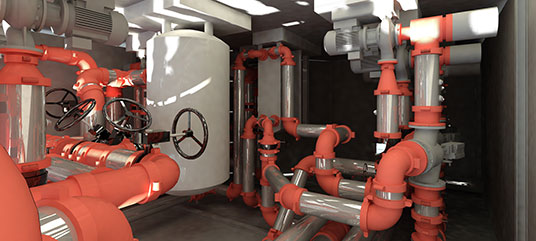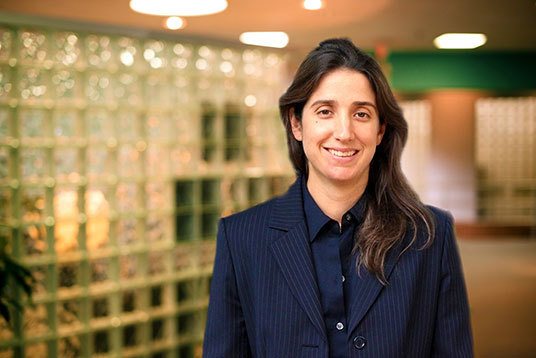Virtual Reality (VR) was born as a tool for gaming. It enables people to immerse into a new dimension while playing their favourite games. The extraordinary characteristics of VR give users the chance to get thrown into a new, digitally constructed reality, which resembles real life. But the gaming industry is not the only place where VR is useful. Coping with reality is a real challenge for professionals working in the construction industry: it is indeed very well-known, when projects come to life, they can be threatened by a high amount of inefficiencies that result in low profit margins.
Many of the problems found in the construction industry are directly correlated with the inability of field personnel, designers, architects and engineers to truly experience a project before it is built. This creates costly issues, and in many instances work has to be stopped or paused as construction teams stumble upon errors which couldn’t be seen on paper. Essentially, construction professionals have to use a flat 3D model, rather than immersive technology, to visualise how alike a finalized project would be to the initial plans when complete.
VR’s use today is shifting from gaming to other, more practical applications. VR can indeed enable professionals in any industry, but particularly in the construction industry, with an incredible tool that gives them the chance to immerse themselves in a project before spending months, if not years, constructing it.
The challenges of the construction industry
Starting from pen and paper, the construction industry has always been based on tools that enable designers to preview and analyse images and ideas, allowing them to plan which actions should be taken to physically assemble a model.
New technologies have recently been developed to project these ideas in a three-dimensional space; these new advances have profoundly revolutionized the construction sector, helping professionals from all over the world have better and more precise insights on the technical specificities of their projects. Technology such as computer-aided design (CAD), as well as 3D modelling and Building Information Modelling (BIM), are often used to show clients formats, spaces, and systems before a brick is laid.
However, previewing paper and flat computer-generated details still only provides practitioners with a limited experience of the finished building: certain faults related to construction and design arise only when the construction process has already started, and these issues force practitioners to stop work and re-assess the feasibility of the construction. These problems are usually very difficult to spot on a digitally generated image, as even 3D models, due to their lack of depth, cannot visualise clearly exactly how the building or facility will look and feel like when built. Often, these shortcomings also affect business relationships as the designer’s vision for the completed structure fails to match the client’s: when on paper, in fact, it is very difficult for the client to communicate their exact needs, and at times the finalized project doesn’t correspond to the desired outcome.
Virtual Reality: a solution to these issues
Virtual Reality, as it was designed for gaming, is a tool that can immerse a person inside a virtually constructed environment. 3D modelling and BIM programs, which made huge advancements in the field of project modelling, can now be adapted to VR tools, to visualise a fully virtual representation of an idea in a new dimension at a relatively low cost point. Put simply, the user sees a 3D display through a headset and can get an ‘all-round’ view by turning their head to the side, up and down. For Victaulic’s clients, they can even look “up” and see the headers and distribution piping, visualizing it’s about visulation but what separates VR from 3D is that you can feel it every piece of pipe as if it were hard piped in.
The most obvious benefit of virtual reality for construction firms is that it can save time and money by allowing construction professionals to test any number of features before works starts. The VR headset allows all parties involved in the construction phase to identify potential conflicts or required changes at the design stage, rather than during construction, when they’re extremely costly to put right. Construction professionals can literally “walk inside” their project with the entire piping system installed and have the ability to spot any fault that they would not have been able to identify on a flat model on a laptop. VR helps guide their judgement, and can confirm whether the designed structure resembles exactly what they had in mind, providing a much clearer idea of whether a building will be fit for purpose and without significant faults.
In addition to this, the client can experience the project virtually, which means they can assess if the finalized building looks and feels exactly how they imagined. For clients, being able to physically look around and visualise how a building will function before it has been built is a major advantage. It provides the opportunity to pick up on the smallest of details, like whether a piece of equipment will fit in a space, and give the contractor feedback accordingly. This greatly improves communication and collaboration between the two parties in an agreement. It provides the opportunity for more valuable input from all, and reduces the possibility for misunderstanding, which could sour future relationships.
Opportunities for companies with VR technology
VR technology is still in its infancy, but companies in the construction industry are increasingly integrating it in their design processes to enrich their design strategies. Victaulic serves as a breakthrough example: with its new adaptable technologies, the company is applying VR to the design and construction of mechanical piping and fire-protection systems and solutions. We are committed to creating high quality, industry-leading content that gives our customers the ability to view their models in a virtual environment, allowing contractors to complete projects faster than they could with traditional methods.
Over the last 5 years, costs for VR equipment having significantly decreased, opening up the technology to companies and industries that previously couldn’t justify the high costs. These cost reductions, coupled with the software behind the lens becoming more robust, has meant that it can play a much larger role in the industry, in particular the construction industry. For these companies they are seeing the value straight away. It requires limited implementation time and users see the value in even the first use.
VR provides Victaulic with the right tools to plan, design and execute construction processes more rapidly and successfully. We are using Revit to create the 3D models that are being utilized in the VR glasses, making sure that we are at the forefront of innovation in the construction industry.
Conclusion
VR has a future in the construction industry. It reduces downtime and miscommunication between designers, construction professionals and clients, making the planning and building process run faster and more precisely. Victaulic is pioneering this innovation, putting VR at the centre of its daily drawing processes and obtaining great results in delivering clearer and more precise projects to its clients.



